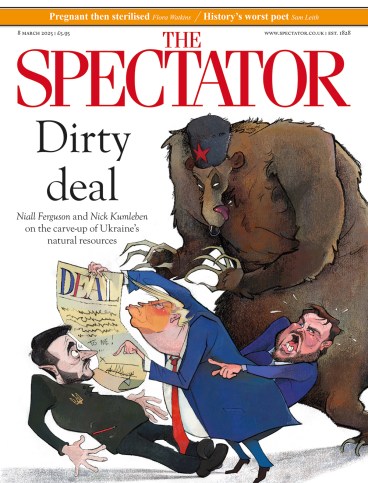
The great auk was a large seabird of the family Alcidae, a group which includes the razorbill, guillemot and puffin, breeding species of North Atlantic cliffs, islands and skerries. Before it was hunted to extinction in the 1840s, the great auk inhabited an ecological niche equivalent to that of penguins in the southern hemisphere. Flightless, and able to nest only on low-lying shorelines, it was nonetheless perfectly adapted to life at sea. Short, flipper-like wings enabled it to dive to prodigious depths for food; soft down and oily flesh kept it warm. Smartly attired in black and white, and with a massive bill, it stood nearly 3ft tall.
The same traits that so suited the great auk to its oceanic life made it both conspicuous and vulnerable. As Tim Birkhead reminds us in this wide-ranging and deeply researched study, human exploitation of the species goes back millennia. Yet for most of history, appetite was held in check by reverence. It was not until the 16th century, when European explorers discovered its largest breeding colony, Funk Island, 40 miles off Newfoundland, that a fatal desecration got under way.
From that point on, the great auk’s world population was entirely integrated into the expanding frontier of European trade. At first the birds were salted and barrelled to provision transatlantic ships; but the demand for down-filled mattresses finally brought total devastation. In the 18th century, crews of men were sent to Funk for the entirety of the breeding season. They penned the feathered residents in stone enclosures, boiling them alive to free their plumes. The stripped corpses, being full of oil, proved ideal fuel: all summer, skinned auks were burned to boil their brethren. By 1800, the place was an ashen palimpsest of bones.
At that point, breeding great auks were confined to an isolated line of sea stacks off Iceland. By a cruel irony, the final phase of the species’ extinction was largely driven by demand for scientific specimens. In 1844, two birds, later identified as the last known breeding pair, were strangled. Sent to Copenhagen, their organs were embalmed and their skins stuffed and mounted.
A large part of this lively and meticulous book concerns the ‘powerful magic’ exercised by such relics. Just 75 great auk eggs and 78 skins survive. To fathom their mystique, Birkhead goes deep into the story of Vivian Hewitt, a pioneer aviator-turned-egg-collector and recluse, who spent vast sums amassing the world’s largest hoard of great auk remains. At one time, Hewitt purchased almost every great auk egg that came on the market. In total, he owned 13 eggs and four mounted skins. They were the chief glories of a mind-boggling cache of ornithological items. When Hewitt died in 1965, his remote home in north Wales was found to contain 15,000 taxidermised birds and half a million preserved eggs.
Crews of men arrived on Funk Island to pen the birds in stone enclosures and boil them alive
Birkhead largely avoids the psychology of all this. As a scholar of ornithology, he can empathise with many aspects of Hewitt’s fascination. Yet, in his own case, he tells us, the main draw is knowledge. To learn more about the great auk, this book attests, is also to honour its life. The bird’s disappearance was a pivotal moment in modern environmental consciousness, leading to the realisation that humans could cause a species to become extinct. Its remains can still yield scientific insights. In recent years, examination of preserved skins has changed our understanding of the way it incubated its brood. Likewise, DNA analysis has helped settle controversy over the possible role of environmental factors in the species’ decline. Genetic evidence suggests the population was healthy before the market-driven intervention of humans.
After Hewitt’s death, his collection was gradually sold off. While all of his stuffed great auks were bought by public institutions, eight of the eggs are now in private hands, their ownership kept secret. An unexpected encounter with one of these ‘lost’ eggs, Birkhead informs us, proved the impetus behind this book, stoking an ‘obsession’ with accounting for the others’ whereabouts. ‘I am simply saddened by the loss of data’, he writes – ‘the fact that all those eggs died in vain.’
If there’s one thing most humans still venerate, it’s the named and recognised dead. In a very real sense, every surviving great auk egg is a memorial to a distinctive individual. Each is marked with a pattern unique to the bird that laid it. Likewise, every stuffed specimen assumes an aura of personhood. When sold privately, these ‘pieces of the true auk’ risk passing into oblivion – a fresh dishonour to the species they have come to represent.







Comments